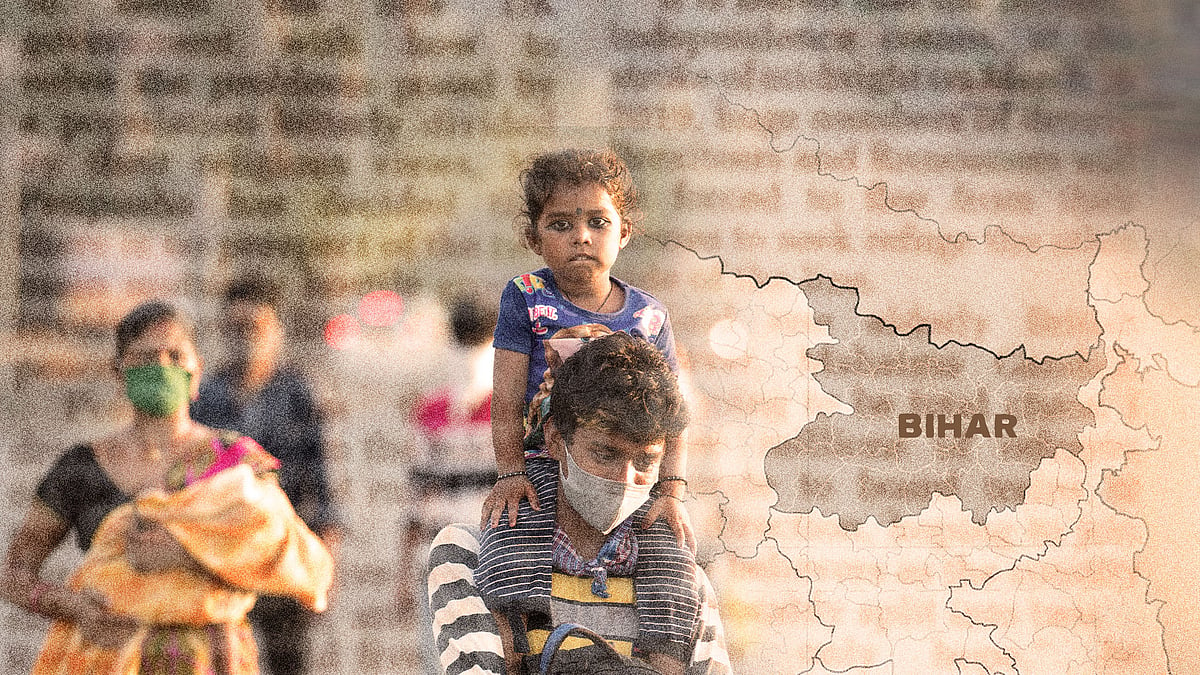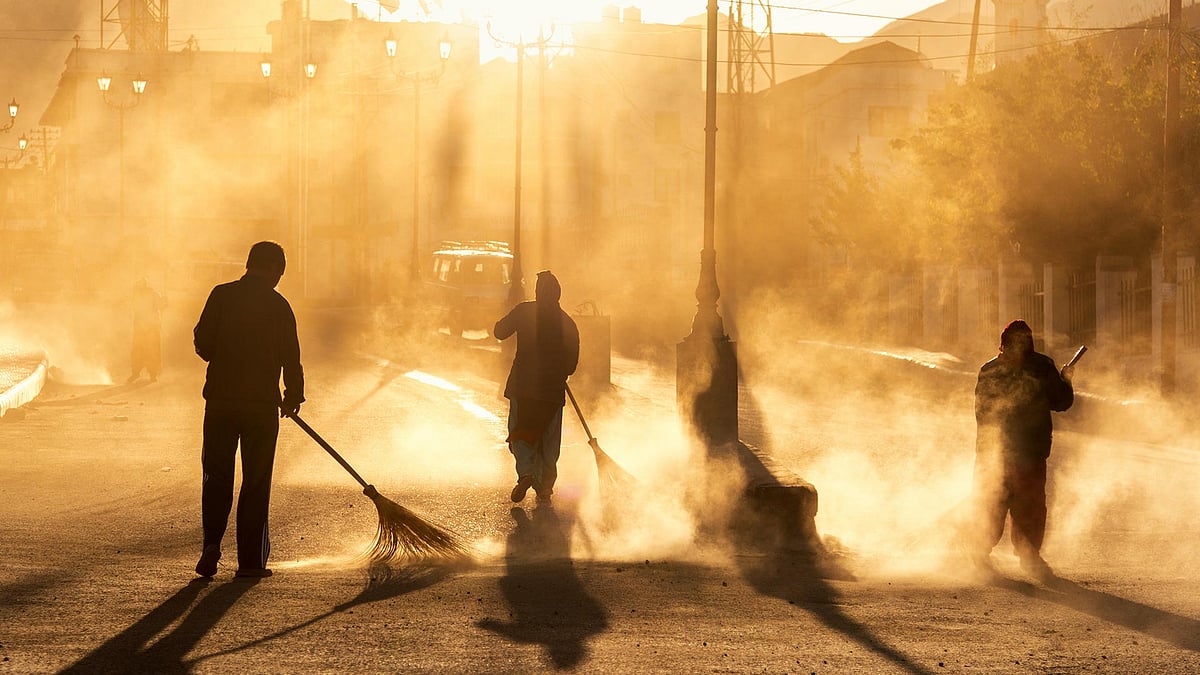How MNREGA can be strengthened to tackle the coronavirus crisis
As migrant workers return to their villages, rural India’s dependence on MNREGA is likely to increase. Here’s how it can effectively reduce rural distress.
On April 15, 2020, the Ministry of Home Affairs issued an order allowing select activities to be restarted from April 20th onwards. This included activities related to the Mahatma Gandhi National Rural Employment Guarantee Act, or NREGA. Since the partial lifting of the lockdown in some parts of the country, various state governments have started NREGA activities in some measure.
As migrant workers across the country return to their villages, rural India’s dependence on NREGA wages for survival is expected to increase manifold. If we expect NREGA to effectively reduce rural distress, some changes will have to be made in its design and implementation — for as long as rural communities grapple with the economic aftershocks induced by the pandemic.
Drawing on our experience at PRADAN, we recommend the following reforms to effectively strengthen the role that NREGA can play in responding to the Covid-19-induced crisis.
Prioritise Individual Benefitting Schemes
Work schemes that can be taken up by individuals and small groups of 4-6 workers must be prioritised. Across many parts of the country, preparation for the kharif season will be underway soon, and individual schemes such as repairing and strengthening bunds on land used for paddy cultivation and fencing of croplands can be introduced. Additionally, schemes for building individual assets such as goat and poultry sheds, dug wells, and farm ponds should also be given priority. For as long as the lockdown continues, work schemes that are relatively less material-intensive should be taken up, as it is difficult to ensure material procurement at worksites.
Increase the number of work schemes
Currently there are only 2-3 work schemes running per panchayat, which is leading to the crowding of workers at worksites. To prevent this and to ensure that all willing households are able to access employment through NREGA, the number of schemes needs to be increased, and 6-8 schemes must be introduced in each village.
Pay workers immediately
Rural households urgently need cash-in-hand, and so the emerging demand is for immediate payment to workers. NREGA payments are frequently delayed by weeks or months. Given the circumstances, such delays will be entirely counterproductive. It is recommended that in remote areas, wage payments should be made in cash, and paid on the same day. In other areas, they must be ensured within a week of submission of muster rolls. To facilitate this, panchayat — who are the implementing agencies for NREGA — can be advanced a revolving fund of Rs 20 lakh which can be used to pay workers.
Modify daily workloads
In compliance with Covid-19 guidelines, workers are wearing masks and other forms of face protection. NREGA works typically involve hard physical labour and workers are finding it challenging to breathe comfortably while working. Consequently, for as long as workers are required to wear masks, the daily volume of work assigned to them must be reduced. A time and motion study needs to be conducted immediately to determine the number of hours of work that can be safely carried out while wearing a mask. All NREGA work sites must be adequately stocked with the necessary supplies, including water, soap, and sanitiser, to ensure workers’ safety in compliance with Covid-19 safety and hygiene guidelines.
Increase wages
When the PM Garib Kalyan Yojana was announced, it included a relief measure for NREGA workers: The daily-wage rate would be increased from Rs 182 per day to Rs 202 per day, effective April 1, 2020. However, Jean Drèze points out that the central government has not actually allocated any additional resources to NREGA.
If NREGA wages are to effectively support rural households as they cope with this crisis, they must, at a minimum, be at par with states’ agricultural wages. For example, the government of Odisha has increased the daily-wage rate for unskilled manual work under NREGA to Rs 298 per day in 20 migration-prone blocks of four districts (Balangir, Bargarh, Nuapada, Kalahandi). This amounts to an additional amount of Rs 91 over and above the notified minimum NREGA wages in the state, which is Rs 207 per day. Other states must follow Odisha’s lead, especially in vulnerable districts.
Increase guaranteed days of work
In light of the limited income-generating activities available in rural India, the number of days of work per job card should be increased from 100 person days per year to 200 person days per year. This move will be especially valuable in blocks that have a high percentage of marginal and landless farmers, Adivasi households, and where migration is high — particularly in the tribal belt of central India. Here too, the Government of Odisha has set an example, by announcing that it will provide an additional 100 days of work, over and above the stipulated 100 days work mandated under NREGA in 20 vulnerable blocks.
Issue job cards
Job cards should be issued to all those who demand NREGA work, within 24-48 hours of receiving an application for the same. In cases where job cards are in the custody of middlemen, these should be reissued immediately.
Include single women
Often, at NREGA worksites two people from a household will work on a scheme together — the men dig the soil and their female counterparts take on the role of headloaders — transporting the excavated soil. In compliance with Covid-19 guidelines, the muster rolls that are currently being issued are limited to 5-6 workers. While this ensures physical distancing at work sites, it is also resulting in a tendency to avoid enrolling single women workers who are seeking employment through NREGA. Officers who receive demands for work and issue muster rolls must remain cognisant of this and special care must be taken to enrol single women in NREGA works.
Strengthen delivery mechanisms
For NREGA to function effectively, government departments must be adequately staffed to support the demand for work, oversee work sites, and make timely payments. This means that people who are staffed to NREGA departments — engineers, supervisors, and others — need to be available for NREGA-related work. Since the announcement of the lockdown, the focus of the government machinery has shifted to providing relief. While this is critical, it should not be at the cost of implementing NREGA.
Engage civil society
Civil society organisations have played a significant role in creating awareness within communities and building the capacity of frontline functionaries on natural resource management, or NRM, under NREGA. Therefore, experienced and capable CSOs should be engaged to create mass awareness and build the capabilities of frontline functionaries.
In 2019, the Ministry of Rural Development launched the Cluster Facilitation Project in aspirational districts and other backward areas, with a view to leveraging NREGA and other livelihoods schemes to reduce poverty. However, the CFP’s focus on the use of GIS and remote sensing technologies for NRM planning greatly reduces the scope to generate demand for employment. NREGA is a demand-driven programme and the government must not turn a blind eye to creating awareness about entitlements and participatory NRM planning processes. It can draw on the learnings from the Cluster Facilitation Team project in Jharkhand, in which CSOs partnered with the MoRD to streamline NREGA — to redesign the newly-launched CFP.
Increase budgetary allocations
The central government’s budgetary allocation of Rs 61,500 crore to NREGA for FY 2020-21 is inadequate. It is even lower than the previous year’s revised estimates of Rs 71,000 crore. The thousands of migrant workers who are returning to their villages will soon begin searching for employment in their local areas. This will undoubtedly result in an increase in the demand for NREGA work and the current budget allocations to the scheme will not be sufficient to meet this increased demand. Echoing the recommendation from eminent activists and economists, an additional Rs 1 lakh crore needs to be allocated so that NREGA can act as a safety net and help rural households cope with the devastating impact of the lockdown.
This story was first published in the Indian Development Review.
 Stories of suffering and state response: How Bihar’s newspapers are covering the migrant crisis
Stories of suffering and state response: How Bihar’s newspapers are covering the migrant crisis A crisis of capital: Why migrant workers can’t be ‘managed’ with food and money
A crisis of capital: Why migrant workers can’t be ‘managed’ with food and money